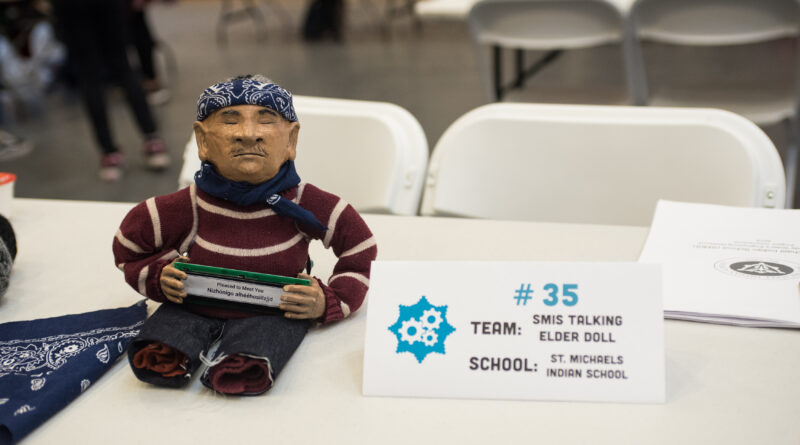
CULTURAL CONTEXT AND INTEGRATION
Integrating Culture in Lessons on Engineering Design and Coding
On Native Nations, the culture and heritage are integral to all life experiences and are important foundations in educational experiences, as well. Identifying the elements of culture to integrate and how they can be best maintained in the context of any set of learning experiences is essential.
Cultural elements can be infused into the topics that apply Engineering Design and Coding. In all cultures there is a tradition around how to approach and solve problems.
In Navajo problem solving is part of the Ways of Knowing and can be integrated with them. Traditions can also be integrated. From the Navajo culture there is a recognition, in fact an honoring, of a babies first laugh. Honoring the laugh extends into having an inventive and playful childhood and can be extended into ways of learning for adults. This is recognized and supported by the Pedagogy of Playful/Joyful learning taught in this manual.
Ways of assuring that the cultural contexts are identified for any block of instructional content include:
- Allow students to bring forth their culturally based and place based stories. Have them share at the beginning of a lesson or unit and then reflect throughout the work. This will set a context of where they are in their cultural/language knowledge and how best to proceed with instruction to assure growth in both academic knowledge and cultural growth. Here instructors are the learners.
- Get reactions to the instruction from Native community members to assure that appropriate values and traditions are captured, adhered to.
- If the product involves a traditional product that is being modified or made from other materials, assure all that the work is a “symbolic representation” of what they view as traditional or sacred.
- Invite Native members to speak about the process of problem solving in the culture.
- Invite Natives who have made a career in related technology-based fields, to speak about their careers and their presence in both the Native and western worlds.
- Talk with other teachers and those who are Dine’ or appropriate and identify programs or events where you can learn about the culture. Attend one a year.
- Before undertaking an instructional unit, speak with Natives about how to integrate Native cultural values and practices into the unit. Have a Native teacher review.
- Involve a Native teacher or community member in embedding appropriate cultural practices and vocabulary into the unit in an ongoing way. Add new elements each year.
- Use a Club setting to invite family members and other Native members to participate with students. Problem solving together.
Example Lesson Integrating Navajo and Hopi Culture and Engineering Design
Engineering a Hopi Bread Oven

Objectives: Students will understand and be able to build a Hopi inspired bread oven integrating Hopi knowledge. Apply Engineering Design to creating a bread oven.
Lesson/Activity: Students research the historical, cultural elements of a bread oven and apply Engineering Design to constructing their own prototype (model).
Phase I: Students take pictures of bread ovens near their homes and compare and contrast them.
Design Questions
- What materials were used? I.e. sand, clay, gravel, cement, cinder blocks, sandstone, insulation materials
- What is the shape? Dome or square shaped
- What do students notice about the door?
- What do students notice about the top (vent)?
- What is an estimate about the area of floor space? How many pies or loaves can be placed in each oven?
Phase II: Students conduct interviews with parents or other adults to learn.
Interview Questions
- Building – How was it built?
- What materials did you use?
- What shape did you use and why?
- Baking – How do you prepare the oven for baking?
- What materials (type of wood) do you use to heat the oven?
- How long does it take to heat?
- What temperature do you need to attain for baking?
- What signs do you look for to indicate the optimum temperature is reached?
- How long does it take to cook the
- Bread?
- Intestines?
- Sweet Corn?
- Pies?
- Maintenance – How do you care for the oven?
Phase III: Students research about the heat index of various materials.
- What does insulation do?
- What materials (charcoal and glass) are used for insulation?
- Why do you need insulation?
Phase IV: Students design a model, to scale, of the oven with clay and other necessary materials.
Design a Model – Students draw a design, to scale, of their bread oven.
Model Questions
- What shape will the oven take? (Square or Dome)
- What is the benefit of each?
- What criteria will need to be met?
- Area
- Heat
- Vent
- Door Size
- Accessibility
Build the Bread Oven
Test Bread Oven – Prepare Hopi bread and bake in each created oven.
Reflection Questions
- What suggestions do you have for improving the oven? Why did you suggest each?
- How could we use coding to improve the process of building and usage?
Resources to Build Culturally Embedded Understanding of Engineering Design
Lessons developed by ASU Polytechnic Institute and the Department of Diné Education


